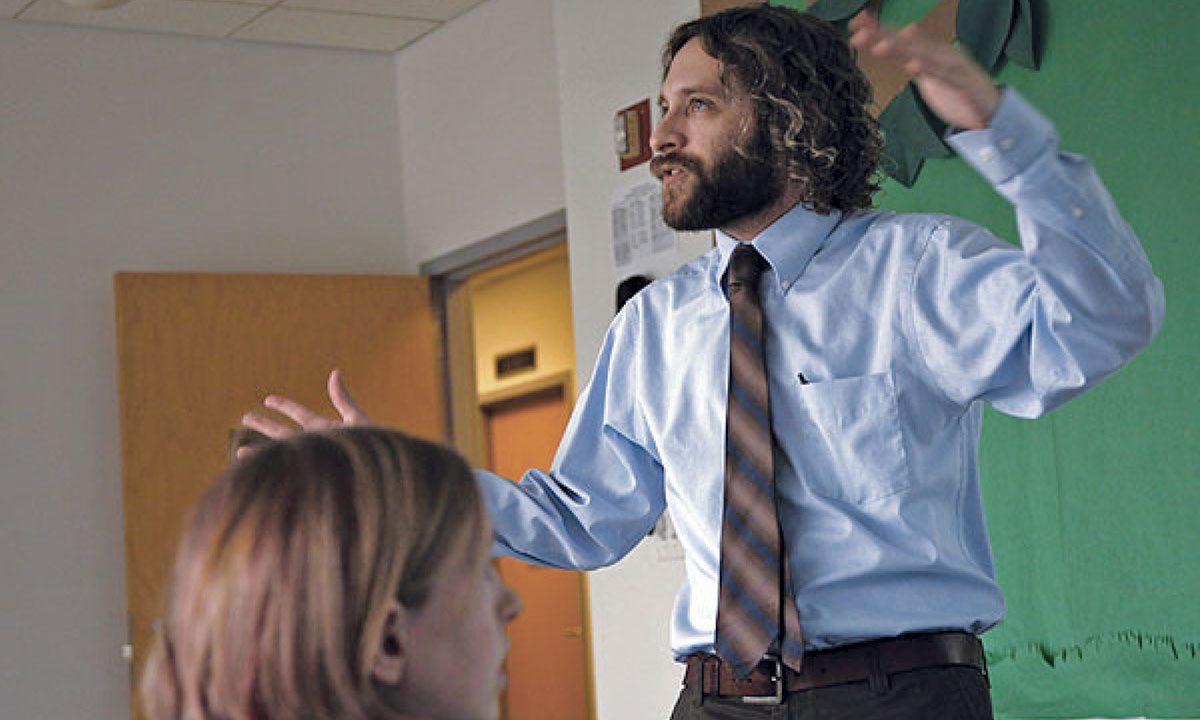Creating a dyslexia friendly classroom
Being the Change
Alumnus overcomes for self and students
By Katie Hudson ('10)
"When I look out at my class, I see myself," says Jared Setnar ('04M). That's because, like many of his students, Setnar is dyslexic.
Setnar teaches ninth- and 11th-grade history at Virginia Beach's Chesapeake Bay Academy, a private academy that offers learning-challenged students a more individualized environment. Students with attention disorders and dyslexia are the majority enrolled in the academy.
Setnar knows how frustrating it can be to overcome a learning challenge. During most of his education in public schools, he says that he resorted to "teaching himself." Dyslexia, Setnar says, "is something one can never be fully cured of." His dyslexia followed him to Virginia-Wesleyan College and on to JMU where he earned a master's in history.
Getting into grad school despite dyslexia
Throughout his education, test taking was the most difficult task, Setnar says. Because of his dyslexia, he does not perform well on standardized tests. After he explained his situation to professors in the JMU history department, they decided to waive Setnar's GRE scores. "I will never forget that, and I will always be grateful," he says.
A few years later, Setnar's mother saw an ad in the newspaper from Chesapeake Academy seeking a history teacher. "I was really excited to find this school that focuses on learning-challenged students. This is definitely a place that I would have wanted to go to school," Setnar says.
The school currently enrolls about 65 students, and classes consist of usually no more than six students. Technology plays a big role in Setnar's classroom. Each lesson has structured notes that Setnar calls "road maps to the lecture." Students can follow along during PowerPoint presentations, and classrooms have interactive white boards to facilitate learning.
Contagious energy, deep understanding
Erica Smith-Llera, principal of the upper school, says Setnar's teaching is not solely successful because of state-of-the-art technology. Setnar's ability to connect with the students is much more powerful. "His energy level is contagious, and students immediately become excited about the history he weaves into compelling stories," Smith says. "Each day, I not only hear, but I also feel, the learning going on in his classroom."
Setnar individualizes his teaching methods for particular students. Some may need one-on-one attention, while others need visual representations of subject matter. "I think it's very easy to teach learning-challenged students," he says. "Dyslexia is not an intellectual disability. These students have difficulty with language or reading, or other challenges, and they just need to handle their aggravation and stress differently. I understand their aggravation, and I can remind them that I am in the same boat they are."
Within two years of joining the Chesapeake Bay Academy faculty, Setnar has worked his way up to assistant principal of the upper school.
With his dyslexia, he knows what it was like to feel isolated and alone during high school, and he doesn't want any of his students to have that same kind of experience. "I am trying to be the principal I wish I had," Setnar says.
His new position requires a lot of work, but Setnar considers himself very lucky. "I might be a little tired when I leave work, but I feel satisfied and fulfilled eve
